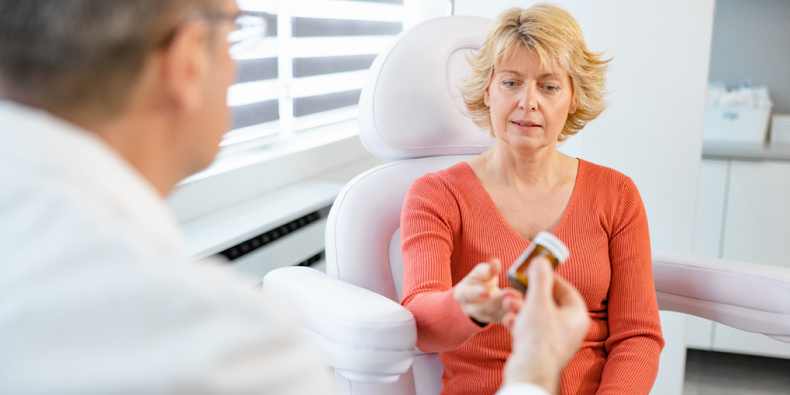Managing the menopause

A generation ago, the menopause was commonly known as ‘the change', and most women were expected to accept it as the beginning of an inevitable decline into old age, crumbling bones and wrinkled skin. The disproven findings of some clinical studies in the 1990s also led to many women being denied HRT, or it being stopped unnecessarily. The fear of an increase in certain types of cancer, thrombosis and stroke also led many women to abandon treatment. It is now well known that an increased risk of breast cancer is more closely associated with obesity, excess alcohol intake and lack of exercise than with prescribed HRT.
In the UK, the average age a woman will reach menopause is 51, though anywhere between 45 and 55 is still considered to be within the normal range. For some women, hot flushes and night sweats, painful joints, episodes of depression, mood swings, low libido, insomnia, anxiety and vaginal and bladder issues can be hugely debilitating. Hormone replacement therapy is one option to help manage these symptoms, though alternatives to conventional HRT are also available.
Hormone levels will fluctuate significantly in perimenopause, and at the menopause the drop in hormone levels can be rapid and profound. The onset of symptoms can be gradual, or relatively sudden. As with all areas of medicine, blood tests can provide helpful information, but should not be used in isolation to make clinical decisions. Blood tests provide doctors and patients with a ‘normal range', but this can vary hugely in some cases, so should only be used in conjunction with an overall picture of symptoms and a full medical history.
It is important for the treating doctor to remember that every woman has different symptoms, and that the ‘one-size-fits-all' HRT often prescribed does not suit every woman, just as the same dress size will not fit every woman's unique shape. Many menopausal ladies have been misdiagnosed as suffering from depression, and been commenced on prescription antidepressants, instead of addressing their hormonal deficiency.
Over the last couple of decades, compounded HRT, sometimes known as ‘bioidentical HRT', has become increasingly popular in the UK. It consists of an infinitely adjustable mixture of oestrogens, progesterone, and often testosterone, which can be compounded in a topical cream or a lozenge dissolved in the mouth. Such hormones are derived from yam and soya bean extracts, and are modified chemically to become identical to the hormones naturally produced by the ovaries of a premenopausal woman.
As a result, they are often better tolerated than the non[1]identical hormones often used in conventional HRT, and the variations possible with bespoke compounding allow the dose to be adjusted to the patient's unique requirements. In some cases, women who are unable to use conventional HRT for medical reasons are still able to safely use BHRT preparations.
You may be surprised to learn that women's ovaries produce testosterone as well as oestrogen. We tend to think of testosterone as ‘the male hormone', but it is important in maintaining energy, well-being and libido, and levels decline from the twenties onwards. Testosterone is not yet licensed for use on the NHS as a menopause treatment, but may be issued on private prescription by doctors experienced in BHRT treatment.
Further information on compounded HRT can be found on the practice website PrivateGP | Oakley Partnership | England (topmedicalpractice.co.uk)
